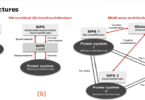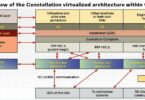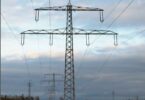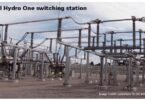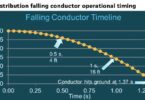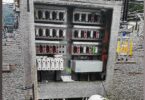by Emil Hillberg, Susanne Ackeby, Gabriel Malmer, Arvid Rolander, Olof Samuelsson, Lars Nordstrom, Sweden
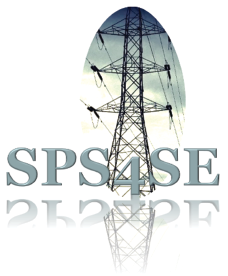
The power system is integral to society, and its significance is increasing as digitalization and electrification advance. Beyond the need for new electricity production, there is already a shortage of transmission capacity, leading to uneven electricity prices and a limited ability to integrate new grid customers while maintaining operational reliability.
Transmission networks are currently designed according to the (N-1) criterion, which ensures that operation is not compromised by the disconnection of any single component. For instance, if a consumption area is supplied from a production area via N (e.g. 5) parallel transmission lines, these cannot be loaded to their full combined capacity because sufficient transmission must be possible with N-1 (i.e. 4) lines.
When available transmission capacity is insufficient, the most robust measure is to physically increase capacity with stronger or additional transmission infrastructure. However, since it can take over a decade from decision to completion, alternative solutions are sought. In the example above, System Integrity Protection Schemes (SIPS) can be employed to, in case of a critical condition, automatically adjust the transmitted power so that it does not exceed the maximum loading of the remaining lines, for example, by reducing consumption.
This allows transmission up to the combined capacity of the lines, albeit with some probability of an unwanted reduction in consumption.

One of the primary uses of SIPS is to mitigate the consequences of rapid and unplanned events that risk leading to cascading effects with major disruptions or breakdowns. Such events are rare but may have a substantial impact on society, which the recent blackout in Spain and Portugal on April 28 is an example of. However, SIPS are also used to provide increased transmission capacity.
With access to increasing amounts of information, such as data from Phasor Measurement Units (PMUs), together with the enhanced ability of computers to quickly process large volumes of data, new types of advanced SIPS solutions are emerging as a measure to manage the increasingly complex power system. The rise in converter-interfaced power production creates conditions for SIPS solutions that can leverage this potential, from a distributed and adaptable approach.
During the last decades, international interest in SIPS has grown, and with this also a general need for knowledge increase and knowledge sharing on how the use of SIPS can enhance the safe utilization of the power system.
The SPS4SE project is addressing how SIPS can support a sustainable development of the Swedish power grid and the Nordic power system, with focus on knowledge building among the Nordic transmission and distribution system operators. In this article, we first describe the status of SIPS utilization in the Nordics, then we address how SIPS impact the electricity market, and finally we present a future outlook including the ongoing development of novel SIPS solutions.
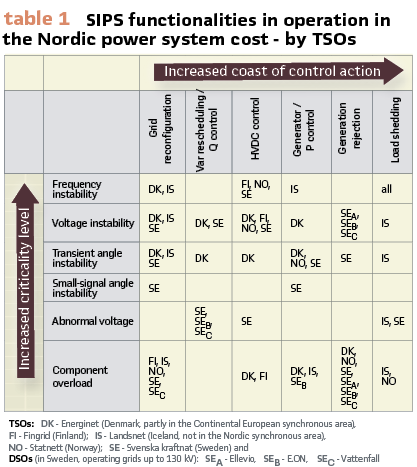
SIPS in the Nordic Power System
Based on a survey among the Nordic TSOs and the largest DSOs, a detailed overview of the SIPS installations in the different power grids has been gathered, which is partly presented in Table 1. The number of SIPS varies between the systems, from under 10 in Finland to over 300 in Norway.
Some of the gathered learnings from the Nordic countries include:
- In Norway, the arming/disarming of SIPS is done manually by the TSO, and the settings are changed approximately 2000 times per year. The capacity contributions of SIPS are calculated, by the back office, who sends the calculated capacities to the national control center for verification – ensuring that the SIPS on which the calculated capacities depend are armed during the relevant time frame. The extensive use of SIPS, in combination with the large number of manual procedures and frequent update of settings, is admittedly becoming a problem
- In Finland and Sweden, new phenomena with converter-interactions related to wind-power integration are becoming a concern for the TSOs which has led them to consider additional SIPS. These SIPS would be applying generation rejection which is triggered in case of contingencies in the grid, in order to mitigate oscillations caused by resonance- or converter-driven instability. Besides converter-driven instability, resonance instability is of concern due to the close-proximity of wind power parks to series compensation in the transmission system. In Sweden, SIPS have already been implemented to address the risk of resonance instability.
- The Danish TSO has developed a dedicated methodology for testing and maintenance of SIPS, including partial end-to-end testing for new SIPS and aim to test SIPS every second year and when components of a SIPS undergo maintenance
- The Nordic Regional Coordination Center, which is responsible for different services such as the flow-based capacity calculations and coordinated security analysis, has noted large varieties in how and what the TSOs report regarding the impact of SIPS for the flow-based capacity calculation. This has an influence on the capacity provided to the market, and there is an identified need for more standardized ways of this interaction
- The three largest Swedish DSO:s, that operate the 70-130 kV meshed grids in parallel with the transmission grid, have been highlighting the impact of transit flows in their distribution grids originating from the transmission grid. The implementation of different types of SIPS solutions in the transmission grid may have a significant influence on the operation of the distribution grids, requiring a coordinated approach in the planning and implementation of SIPS
Table 1 presents an overview of the different SIPS input-output combinations which are present in each operator area. Arrows are indicating the criticality level of system conditions and costs of control actions. Some of the critical system conditions which Nordic SIPS are mitigating are further discussed in the following sub-sections.
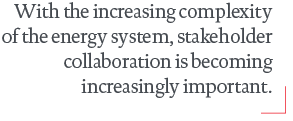
Frequency Instability
The Nordic power system is interfaced with other synchronous systems through a number of HVDC links. These are utilized to provide emergency power in case of frequency excursions, in accordance with predefined levels.
To deal with larger, more urgent frequency drops, all Nordic countries take part in a coordinated under-frequency load shedding scheme (UFLS) acting in steps. Although differing in design between countries, UFLS is one of the most collaborative, wide-area SIPS in place, and the need for it is generally agreed upon. Coordination between the operators is required due to the wide-area nature of UFLS. All loads cannot be shed in one place at the same time for example, as this would lead to a sudden redirection of flows with potential problems in its wake, such as transients, overloads and abnormal voltages.
Voltage Instability
The structure of the Nordic power system, with large production in the north and large consumption in the south, has an influence on the transfer capacity through Sweden which is often limited by sufficient reactive power support. Several SIPS are dedicated to prevent voltage instability, allowing for increased transfer capacities.
Component Overload
The vast majority of Statnett’s 350 SIPS are dealing with component overload, to enable grid capacity above the N-1 secure levels on a number of internal bottlenecks. These schemes involve load shedding or generation rejection, as well as grid reconfiguration.
The fast integration of distributed renewables in the Nordic countries (mainly land based wind power) has led to a large increase in dedicated SIPS to enable the integration of additional generation before new grid infrastructure is in place. These are mainly implemented as straight-forward generation rejection schemes to mitigate overload in case of a contingency, enabling higher amounts of renewable generation and transfer above the N-1 grid capacity.
SIPS Market Impact
There are several examples of how SIPS influence the Nordic electricity markets.
An interesting example is a SIPS implemented for the recently commissioned nuclear unit Olkiluoto 3 (OL3) in Finland. With an installed capacity of 1600 MW, OL3 is the single largest generating unit in the Nordic system, surpassing the 1450 MW of Oskarshamn 3 which is the dimensioning generator unit of the Nordic power system.
The OL3 SIPS is connected to active power control (based on control of load and batteries) to decrease the total net power change, as a result of an OL3 trip, to be limited to 1300 MW. In this way, the OL3 SIPS prevents OL3 from becoming the dimensioning unit of the Nordic power system and mitigates the need for procuring additional balancing reserves in the Nordics.
Another example is related to the transfer corridor between southern Norway and Sweden, the “Hasle” corridor. From the Norwegian side, the capacity of the corridor has been increased by 600 MW by a dedicated generation rejection scheme. The scheme has been in operation for many years. One value of this SIPS has been to enable higher trading capacity for export of power from Norway over the Hasle corridor.
However, the recent developments of the Nordic power system (with a number of large HVDC connections from western Norway to continental Europe and the UK) has led to a need to increase the import capacity to Norway over the corridor. This has led to a new SIPS being implemented from the Swedish side.
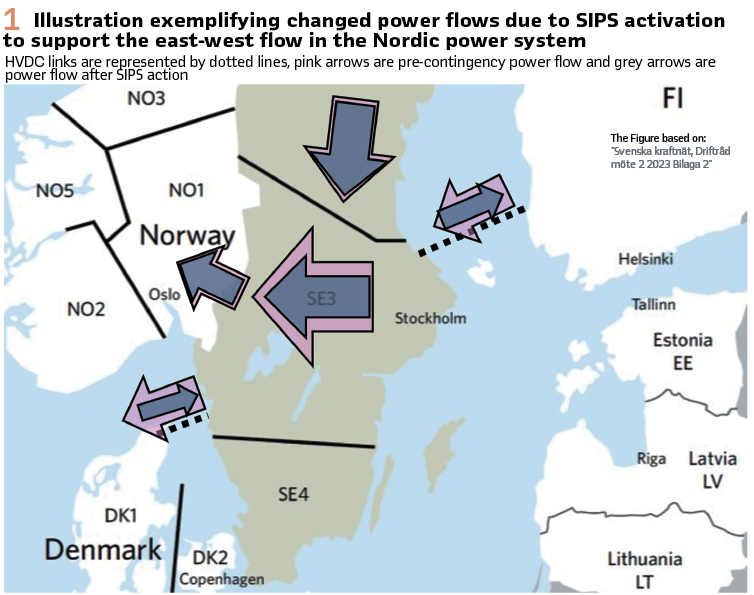
This SIPS utilizes two HVDC links to alter the power flow and relieve the transmission grid in central Sweden in case of a critical contingency influencing the capacity of the corridor. Thus, the SIPS enables a higher east-west flow through the Nordic power system. (Figure 1).
The flow-based capacity allocation method was introduced in the Nordic system during the end of 2024. The flow-based method involves a more detailed model of physical grid elements, thus providing a more realistic estimate of available capacity in meshed grids. The method also provides TSOs with a structured way to consider SIPS in the capacity allocation process. As part of the flow-based algorithm, the impact of SIPS can be explicitly considered as “flow increase due to remedial actions” (FRA). The impact of FRA is described in (Nordic perspective on System Integrity Protection Schemes in relation to capacity allocation, CIGRE, May 2025), with a quantified assessment of the enabled increased trading capacities and monetary value of the increased grid capacity presented in Figure 2.
In the day-ahead market coupling optimization, a shadow price is returned for each critical network element, representing the value of additional capacity on that element (€/MW). By multiplying the flow increase due to remedial actions (FRA, MW) with that shadow price, and summing over all hours and elements, it can be noted that from this perspective alone the economic value of remedial actions amounted to over 10 million € in the Nordics in the first two months of flow-based operation.
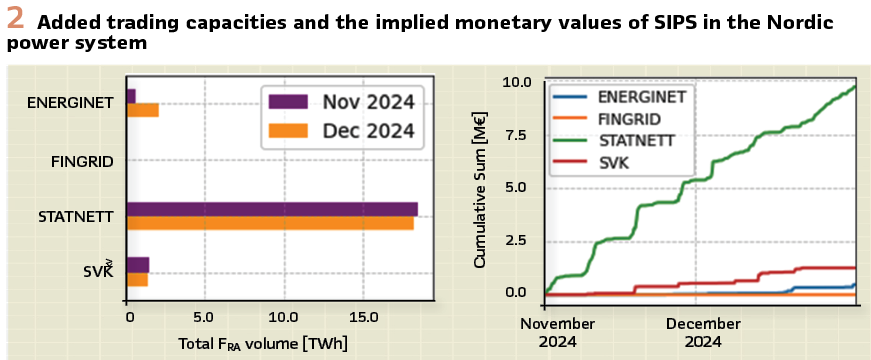

International Developments
International deployment of new type of SIPS solutions includes e.g. utilization of large numbers of distributed resources for increased integration of renewable generation, as implemented on system level in Spain and on zonal level in France.
In Spain, the coordinated SIPS solution Quijote, is providing automatic curative actions to decrease the need for preventive actions (e.g. reduction of renewable generation). The Quijote solutions are structured in two modules, an automatic power reduction module and an automatic topological maneuvers module. The first module has been in operation since April 2022, resulting in an addition of 4.3 TWh of renewable energy provided (by October 2024).
In France, the SIPS solution called NAZA has been developed and implemented to manage detected congestions on a zonal level in the French sub-transmission grid. The NAZA solution is relying on an optimization algorithm which considers several types of curative actions, including topological reconfiguration, storage, and generation curtailment. Since the start of 2022, the NAZA solution has been implemented in approximately 20 zones in the French grid.
The high international interest in the field of solutions to provide enhanced grid capacity is noticeable in many areas, e.g. on the pre-normative level through the recently started CIGRE working groups C2/B5.46 System Integrity Protection Schemes and the (N-1) criteria and C5.22 Mitigating systemic market risk in electricity markets.
Future Outlook
In Sweden, there is an ongoing test with implementation of a mix between Flexible Connection Agreements (FCA) and SIPS to provide increased capacity on local level in Sweden. The Capacity Measure system is a trial to evaluate an alternative temporary solution which can provide added capacity to customers in the distribution grid while awaiting grid infrastructure reinforcements.
The Capacity Measure is procured and integrated with the TSO and DSO control room, can be activated manually or automatically and is intended to be implemented as illustrated in Figure 3. In contrast to FCA, the cost of the Capacity Measure is inflicted on the customer, which is provided with the added capacity.
The research on novel SIPS solutions is continuing, and within the SPS4SE project there are two focus areas of the development which are briefly described in the following sub-sections.
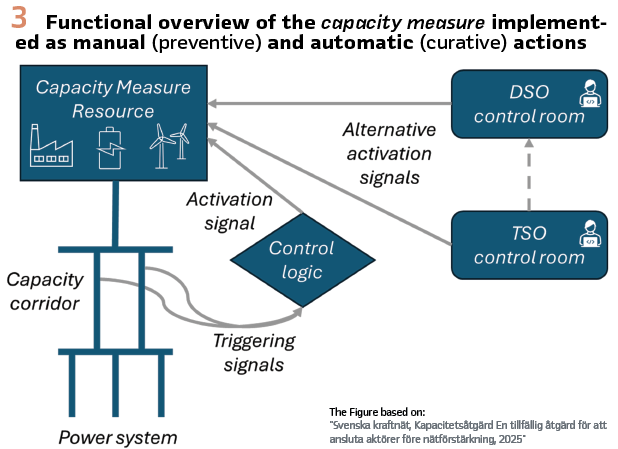
Utilization of HVDC and PMUs for Advanced PQ Control
In heavily loaded systems with large transmission distances, voltage instability might arise with voltage collapse as the most critical outcome. Increasing flows decrease voltages in the load end, and minimum voltage – typically under some contingency – can be the operational security limit that constrains capacity on a line or corridor, before e.g. thermal limits are hit.
Today, HVDC Emergency Power Control (EPC) is a commonly used SIPS to mitigate frequency instability, by controlling asynchronous HVDC links to increased import or export when frequency excursions are detected. With modern HVDC technology using Voltage Source Converters (VSC), the reactive power capability of the converter is drastically improved. The capability curve is essentially circular, and P and Q can be controlled independently as illustrated inFigure 4. This increases the attractiveness of using HVDC EPC also to mitigate voltage instability – we term this V-EPC.
Instead of using measured frequency as triggering criterion (input), it is adequate to use e.g. voltage magnitudes or the status of field or stator current limiters of nearby generators. When mitigating frequency instability, only the change in active power setpoint (ΔP) is relevant whereas for voltage, both P and Q are pivotal. The optimal voltage support from VSC HVDC, returning the maximum loadability before a lower voltage limit is hit, is achieved by providing a mix of active and reactive power, and it can be shown that the optimal mix is defined by the phase difference between a local and a remote bus:
PHVDC.import = VPCC * Ilim * sin(Δδ)
QHVDC.import = VPCC * Ilim * cos(Δδ)
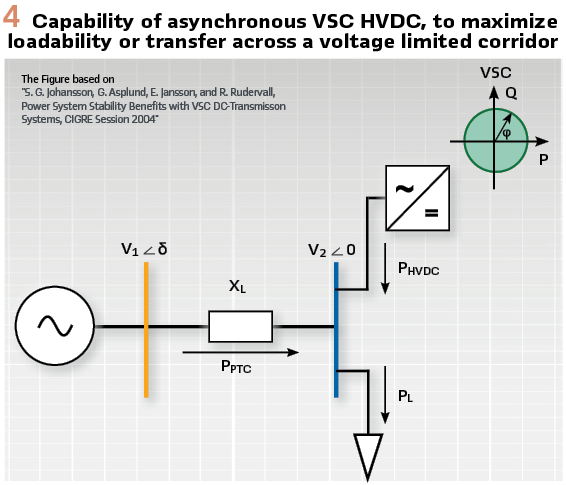
For embedded HVDC links, connecting two buses in the same synchronous area, and for systems without voltage support along the corridor, the choice of local and remote bus is rather straight forward. For larger systems however, the choice of suitable remote bus becomes less apparent.
Our current work focuses on designing and simulating a V-EPC scheme dynamically. By iteratively shifting load over a transfer corridor and considering that no voltage collapse occurred within a predefined timeframe as benchmark, the capacity (Fmax) on the corridor can be quantified.
The test system used is the Nordic 32 Test System, an IEEE test system for voltage stability studies. We compare two different control strategies – controlling against a remote node as described above, requiring synchronized wide-area measurements – or providing a predefined mix of P and Q. Preliminary results show that the two control strategies can be equally effective.
The first strategy requires the right choice of remote node – results indicate a strong node with firm voltage support – whereas the second strategy requires prior simulation studies to find the optimal mix of P and Q in advance. Both strategies outperform the “no V-EPC” alternative.
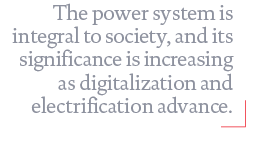
Grid Reconfiguration – (Agent based)
As mentioned earlier, the increased reliability provided by SIPS enables operators to run the grid closer to its limits, which is accounted for in the flow-based capacity allocation method. However, there is a clear tradeoff between being able to utilize the grid more and the price of the control measure employed, as illustrated by Table1. Perhaps the cheapest available type of remedial actions includes grid reconfiguration and static reactive power control, which constitutes a range from switching of shunt elements to support voltage to bus splits and transmission line switching to redirect power flow. The latter two are becoming viable alternatives to traditional congestion management measures, as shown by their implementation in e.g. NAZA.
However, adapting the grid topology to suit operating conditions relies on being able to reliably solve large scale integer programs. As is typical for integer programming, very long worst-case solution times for even moderate size grids make practical implementations of transmission line switching difficult, and the combinatorial scaling worsens when considering bus splits.
A majority of the economic benefits of transmission switching are achieved by only switching a few lines.
This opens the door for machine learning based approaches as an attractive practical alternative or complement to pure optimization methods. Such machine learning based methods can provide operators with valuable suggestions for possible topological modifications, which adds another tool to the operator’s arsenal to decrease dispatch costs and improve reliability. In the long run, such methods can become part of adaptive SIPS implementations providing least cost alternative curative actions to mitigate critical system conditions.

Other Research Areas
Additional areas for research and development involve solutions to provide increased support for the operators, such as advanced visualization techniques of SIPS, detailed information on their impact on the operation of the power system, utilization of wide-area monitoring control and protection (WAMPAC) solutions and addressing SIPS as part of the transition towards probabilistic risk assessment which is a future requirement in the EU regulation.
Final Reflections
It is foreseen that there will be continued increased deployment of SIPS world-wide, as SIPS are providing cost effective, agile, and sustainable ways to develop the power systems. There is however a backside to deployment of SIPS, which is the increased complexity in planning and operation of the power system, and the additional risks which this may bring. This calls for both more research and development of advanced SIPS solutions, as well as standardization of solutions and methods, to provide increased trust in utilization of SIPS solutions. The dual objectives of SIPS, as providing a defense in case of extreme events and enabling increased grid capacity, present significant societal gains. As such, SIPS enable ways to faster integrate renewable generation and to provide enhanced security of electric power supply to society, which through the ongoing digitalization is becoming more and more dependent of secure and reliable electricity.
With the increasing complexity of the energy system, stakeholder collaboration is becoming increasingly important. Through the strong engagement by Nordic stakeholders, the SPS4SE project is fostering international collaboration, together with knowledge increase and knowledge sharing, on how the use of SIPS can enhance the safe utilization of the power system. In this way, the project supports the development of the Swedish power grid and the Nordic power system in their ability as enablers for the continued energy transition.
Acknowledgement
This work has been supported financially by the Swedish Energy Agency, and with expertise from: the Nordic transmission system operators (Svenska kraftnät, Fingrid, Statnett, Energinet, and Landsnet), the Nordic Regional Coordination Center (Nordic RCC), the largest Swedish distribution system operators (Vattenfall Eldistribution, E.ON, and Ellevio), and industry representatives from Hitachi Energy and DNV.
Biographies:

Emil Hillberg – Senior researcher at RISE Research Institutes of Sweden with M.Sc. and Ph.D. degrees in electrical engineering from KTH and NTNU, respectively. Emil has over twenty years of experience in the power system area, including positions at ABB, SINTEF, STRI, and since 2018 at RISE. Emil is a Senior Member of IEEE, a member of the Swedish national committee of CIGRE, and the convenor of CIGRE JWG C2/B5.46 on SIPS.

Susanne Ackeby – Research & Development Engineer at RISE Research Institutes of Sweden After her M.Sc. degree in Electrical Power Systems at Chalmers University of Technology in Gothenburg, she has positions at ABB, STRI, DNV before her current employment. For several years, Susanne has been leading the WG Power T&D Systems in ISGAN the International Smart Grid Action Network. She has been engaged in several projects related to the energy transionsions impact on the future electricity supply and means to improve the prerequisites for a future sustainable, reliable and secure power system.

Gabriel Malmer – Ph.D. student at Lund University. He received his M.Sc. degree in engineering physics in 2023 from Lund University, where he is currently working towards his Ph.D. degree in electric power systems. Gabriel wrote his M.Sc. thesis on MV network reconfiguration for increased distributed generation, which was recognized with two shared awards. His current research focuses on power system dynamics (voltage stability), capacity calculations and remedial actions. Gabriel is an active member of IEEE, serving as chair of the local student branch and PES chapter, and contributes to CIGRE through Joint WG C2/B5.46.

Arvid Rolander – Ph.D. student at KTH – Received his M.Sc. in engineering physics from Lund University in 2020 and is currently pursuing his PhD at KTH – The Royal Institute of Technology, Stockholm, Sweden. His research interests mainly concern data driven decision support with a focus on automation and optimization of remedial actions, aimed both towards real time operation, capacity calculation and security assessment.

Olof Samuelsson is professor of electric power systems at the Division of Industrial Electrical Engineering and Automation, Lund University, since 2015. His research interests cover transmission issues, as well as distribution issues such as integration of distributed generation, microgrids and e-mobility. The emphasis is on grid capacity and non-wire alternatives. Olof Samuelsson is active in the Swedish competence centres for electromobility (SEC) and balancing (SESBC). He is a senior member of IEEE and a member of the Swedish national committee of CIGRE.

Lars Nordstrom – (Ph.D., MSc.EE) is Professor in Information Systems for Power System Control at KTH – The Royal Institute of Technology, Stockholm, Sweden. He is head of the division of Electric Power and Energy systems at KTH, and a parttime R&D advisor at Svenska kraftnät, the Swedish TSO. He has served as director of the Swedish center of Electric Power Engineering and as Thematic leader for Smartgrids and electric storage in KIC InnoEnergy He has been a visiting professor at Washington State University and visiting researcher at the UC Berkeley TRUST centre. He is the author of numerous scientific papers, a senior member of the IEEE, CIRED and Cigre and past chairman of the Swedish mirror committee of IEC TC57.



